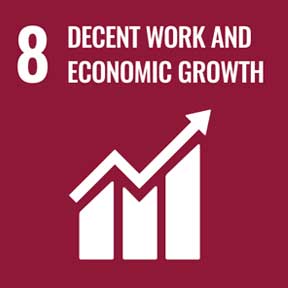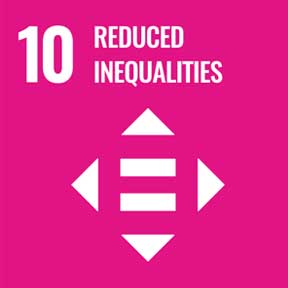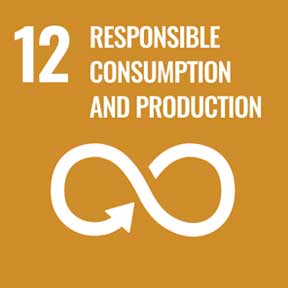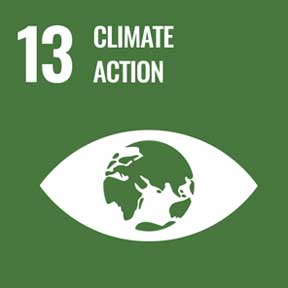Departmental Sustainable Development Strategy 2023 to 2027
View the print-friendly version: PDF (1,024 kB)
Please see the January 2025 update for the latest version of this strategy
Cat. No.: Iu98-1/2E-PDF
ISSN: 2816-8828
Executive summary
Prairies Economic Development Canada (PrairiesCan) supports economic growth and diversification in the Prairie provinces and advances the interests of the region in national economic policy, programs, and projects. The Department’s sustainable development vision is for an economy that is prosperous, sustainable, and benefits all people living and working on the Prairies.
The department makes strategic investments to help the region seize both traditional and emerging economic opportunities. This includes investments in clean technology and clean resources that supports environmental sustainability and economic diversification.
As part of implementation of the Building a Green Prairie Economy Act, the department held wide-spread engagement to inform the development of a framework to promote economic sustainability and growth and employment in the Prairie provinces.
PrairiesCan fosters a more inclusive economy by supporting the economic participation of marginalized populations such as Indigenous peoples, black Canadians, women, and youth.
Additionally, green and inclusive procurement is an important part of the department’s operations through training and implementation. For example, PrairiesCan participates in the federal Procurement Strategy for Indigenous Business, which aims to increase the level of procurement from Indigenous businesses.
Section 1: Introduction to the Departmental Sustainable Development Strategy
The 2022 to 2026 Federal Sustainable Development Strategy (FSDS) presents the Government of Canada’s sustainable development goals and targets, as required by the Federal Sustainable Development Act. This is the first FSDS to be framed using the 17 Sustainable Development Goals (SDGs) of the United Nations 2030 Agenda and provides a balanced view of the environmental, social and economic dimensions of sustainable development.
In keeping with the purpose of the Act, to make decision-making related to sustainable development more transparent and accountable to Parliament, PrairiesCan supports the goals laid out in the FSDS through the activities described in this Departmental Sustainable Development Strategy (DSDS).
The Federal Sustainable Development Act also sets out 7 principles that must be considered in the development of the FSDS as well as DSDSs. These basic principles have been considered and incorporated in PrairiesCan’s DSDS.
In order to promote coordinated action on sustainable development across the Government of Canada, this departmental strategy integrates efforts to advance Canada’s implementation of the 2030 Agenda National Strategy, supported by the Global Indicator Framework (GIF) and Canadian Indicator Framework (CIF) targets and indicators. The strategy also now captures SDG initiatives that fall outside the scope of the FSDS to inform the development of the Canada’s Annual Report on the 2030 Agenda and the SDGs.
Section 2: Prairies Economic Development Canada’s sustainable development vision
PrairiesCan endeavors to be a leader in creating a more diversified economy in Alberta, Saskatchewan and Manitoba that has strong, competitive, and innovative businesses and communities. The Department’s sustainable development vision is for a Prairie Canadian economy that is prosperous, sustainable, and benefits all people living and working on the Prairies.
PrairiesCan plays a key role as investor, convenor, advisor, and pathfinder throughout the Prairie region. The sustainable development vision is embedded in its strategic priorities: new value and competitiveness, green economy, and inclusivity. PrairiesCan helps businesses and communities seize new opportunities, including clean technologies and reducing environmental impacts. The department enables success in a net-zero future by supporting regional economic development, as well as through the implementation of the Building a Green Prairie Economy Act. Finally, PrairiesCan promotes inclusivity by supporting the economic participation of marginalized populations, such as Indigenous peoples, black Canadians, women, and youth.
The 2022 to 2026 FSDS has seventeen goals that span the three dimensions of sustainable development – social, economic, and environmental. PrairiesCan contributes to the following four 2022 to 2026 FSDS goals:
- FSDS Goal 8 – Encourage Inclusive and Sustainable Economic Growth in Canada
- FSDS Goal 10 – Advance Reconciliation with Indigenous Peoples and Take Action on Equality
- FSDS Goal 12 – Reduce Waste and Transition to Zero-Emission Vehicles
- FSDS Goal 13 – Take Action on Climate Change and its Impacts
Section 3: Listening to Canadians
As required by the Federal Sustainable Development Act, PrairiesCan has taken into account comments on the draft 2022-2026 FSDS made during the public consultation held from March 11 to July 9, 2022.
During the public consultation, led by Environment and Climate Change Canada (ECCC), more than 700 comments were received from a broad range of stakeholders, including governments, Indigenous organizations, non-governmental organizations, academics, businesses, and individual Canadians of different ages and various backgrounds. The draft FSDS was also shared by ECCC with the appropriate committee of each House of Parliament, the Commissioner of the Environment and Sustainable Development, and the Sustainable Development Advisory Council for their review and comment.
What we heard
Based on the feedback received, PrairiesCan identified sustainable development priorities and issues that are particularly relevant to the region. For instance, the commentary identified the need for increased prominence in the social inclusion and economic growth aspects of sustainable development to balance them against the environmental protection aspect. PrairiesCan supports economic growth and diversification in the Prairie economy. The department also promotes inclusive economic growth for underrepresented groups in the Prairies.
There were also comments related to ‘just transition’ (sustainable jobs), supporting net-zero by 2050, and deploying clean technologies. As the region with the highest per-capita emissions, the Prairies are at the center of achieving net-zero emissions by 2050. PrairiesCan will play an important role in Canada’s, and the Prairies’, transition to a net-zero economy.
In addition, as part of implementation of the Building a Green Prairie Economy Act, the department consulted provincial and municipal government representatives, Indigenous governing bodies, the private sector, and employer and employee groups across the Prairies. People on the Prairies, in the face of changing climate and a low carbon future, want to build on their strengths and seize new economic opportunities.
What we did
PrairiesCan took the above-mentioned key priorities and issues (i.e., balancing social inclusion and economic growth, net-zero transition, and seizing new opportunities) into consideration in this DSDS. The department is currently undertaking initiatives that are related to the key issues identified from the FSDS public consultations and the Building a Green Prairie Economy Act engagement. This input is being incorporated into the development of a framework to build a green economy in the Prairie provinces. Additionally, the department continues to invest in clean technology and clean resources projects to support sustainable economic growth.
PrairiesCan continues to promote inclusivity. Supporting Indigenous economic development is a priority for the department. The department also continues to provide funding and support to other underrepresented groups, such as black entrepreneurs, women, and youth.
Please find more information on the FSDS public consultation and its results in the FSDS Consultation Report.
Section 4: Prairie Economic Development Canada’s commitments
Goal 8: Encourage inclusive and sustainable economic growth in Canada

FSDS context
Goal 8 in the 2022 to 2026 FSDS aims to increase competitiveness and create a more sustainable and diverse economy, including growing and supporting clean technologyEndnote 1 and other emerging sectors. PrairiesCan promotes growth, inclusiveness, and sustainability in the Prairie economy by enhancing innovation, improving business competitiveness, promoting the adoption of clean technologies, and inclusive growth. The department makes strategic investments in key sectors including, clean technology and clean resources,Endnote 2 life sciences, value-added agriculture, advanced manufacturing, and digital technology. Under the Canada Coal Transition Initiative and Canada Coal Transition Infrastructure Fund, the department supports skills development, infrastructure investments, and economic diversification in impacted communities transitioning away from coal-fired electricity generation. Finally, through the Building a Green Prairie Economy Act, the department, along with other federal departments (including: Agriculture and Agri-Food; Environment and Climate Change; Finance; Innovation, Science and Economic Development; Natural Resource; and, Transportation), will help focus federal efforts to promote economic sustainability, growth, and employment in the Prairie provinces.
Target theme
Support for workers and business
| Implementation strategy | Departmental action | Performance indicator/ Starting point/ Target |
How the departmental action contributes to the FSDS goal and target and, where applicable, to Canada’s 2030 Agenda National Strategy and SDGs |
|---|---|---|---|
| Support workers, businesses and communities | Fund clean technology and clean resources projects in the Prairies. Program: All PrairiesCan programs |
Performance indicator:
|
Investment in clean technology and clean resources links to the FSDS by contributing to innovation and increasing competitiveness in the region. Investment in this area supports working towards a sustainable economy, by producing less emissions, as well as increasing economic diversity. It also creates clean technology jobs in the regional economy. Relevant targets or ambitions: CIF ambition: Canadians contribute to and benefit from sustainable economic growth CIF indicator: 8.6.1 Jobs in the clean technology products sector GIF target: 8.2 Achieve higher levels of economic productivity through diversification, technological upgrading and innovation, including through a focus on high-value added and labour-intensive sectors |
| Develop a framework for local cooperation and engagement in the implementation of federal programs across various sectors to build a green economy in the Prairie provinces. Program: Building a Green Prairie Economy Act |
Performance indicator:
|
Developing and implementing a framework for Building a Green Prairie Economy Act will contribute to the FSDS’s goal about building a sustainable economy. Relevant targets or ambitions: CIF ambition: Canadians contribute to and benefit from sustainable economic growth GIF target: 8.2 Achieve higher levels of economic productivity through diversification, technological upgrading and innovation, including through a focus on high-value added and labour-intensive sectors |
Goal 10: Advance reconciliation with Indigenous peoples and take action on inequality

FSDS context
Goal 10 of the 2022 to 2026 FSDS focusses on advancing reconciliation with First Nations, Inuit, and Métis communities. It also has a broader ambition of taking action to reduce inequalities for all racialized and marginalized groups. PrairiesCan fosters a more equitable and inclusive economy by supporting the economic participation of underrepresented populations including Indigenous peoples, black Canadians, women, and youth, and seeks collaborative opportunities in an effort to advance Indigenous economic development. The department supports the Prairies Business Service Network (PBSN), which provides services to underrepresented groups including Indigenous businesses, women entrepreneurs, entrepreneurs with disabilities, and rural businesses. It also delivers national programs such as the Black Entrepreneurship Program and the Women Entrepreneurship Strategy. PrairiesCan is developing a roadmap to improve economic inclusion of Indigenous peoples across the Prairies, including the launch of a landing page for prospective Indigenous economic development projects. In addition, the department implements the Government of Canada’s Procurement Strategy for Indigenous Business, with an objective to exceed the federal minimum of five percent.
Target theme
Advancing reconciliation with First Nations, Inuit, and the Métis communities
Target
Between 2023 and 2026, and every year on an ongoing basis, develop and table annual progress reports on implementing the United Nations Declaration on the Rights of Indigenous Peoples Act (Minister of Justice and Attorney General of Canada)
| Implementation strategy | Departmental action | Performance indicator/ Starting point/ Target |
How the departmental action contributes to the FSDS goal and target and, where applicable, to Canada’s 2030 Agenda National Strategy and SDGs |
|---|---|---|---|
| Implement the United Nations Declaration on the Rights of Indigenous Peoples Act | Increase share of procurement contracts to Indigenous businesses Program: Internal Services |
Performance indicator: Percentage of the total value of PrairiesCan contracts awarded to Indigenous businesses Starting point: 8% of the total value of PrairiesCan contracts awarded to Indigenous businesses for the period 2022 to 2023 Target: 10% of the total value of PrairiesCan contracts awarded to Indigenous businesses per fiscal year |
Increasing departmental procurement from Indigenous businesses will help to address inequalities in federal procurement. It contributes to the Economic, health and social rights section of the United Nations Declaration on the Rights of Indigenous Peoples Act. Relevant targets or ambitions: CIF ambition: Canadians live free of discrimination and inequalities are reduced GIF target: 10.2 By 2030, empower and promote social, economic and political inclusion of all, irrespective of age, sex, disability, race ethnicity, origin, religion or economic or other status |
| Support economic development and entrepreneurship in Indigenous communities | Fund Indigenous-led and Indigenous impact projects in the Prairies Program: PrairiesCan Core Programs |
Performance indicator: Value of PrairiesCan core funding that supports Indigenous projects Starting point: $8.7 million in total core funding that supports Indigenous projects in 2022 to 2023 Target: $10.8 million in total core funding that supports Indigenous projects per fiscal year |
Funding Indigenous projects in the Prairies will directly help Indigenous communities and entrepreneurs. Relevant targets or ambitions: CIF ambition: Canadians live free of discrimination and inequalities are reduced GIF target: 10.2 By 2030, empower and promote social, economic and political inclusion of all, irrespective of age, sex, disability, race ethnicity, origin, religion or economic or other status |
Goal 12: Reduce waste and transition to zero-emission vehicles

FSDS context
Goal 12 of the 2022 to 2026 FSDS focuses on waste reduction and transitioning to zero-emission vehicles, with an emphasis on the circular economy. PrairiesCan requires its procurement staff to take training on green procurement, and integrates environmental and sustainable considerations into the procurement decision-making process.
Target theme
Federal leadership on responsible consumption
Target
The Government of Canada’s procurement of goods and services will be net-zero emissions by 2050, to aid the transition to a net-zero, circular economy (All Ministers)
| Implementation strategy | Departmental action | Performance indicator/ Starting point/ Target |
How the departmental action contributes to the FSDS goal and target and, where applicable, to Canada’s 2030 Agenda National Strategy and SDGs |
|---|---|---|---|
| Strengthen green procurement criteria | Require all PrairiesCan specialists in procurement and material management to have training in green procurement through the Canada School of Public Service Green Procurement Course Program: Internal Services |
Performance indicator: Percentage of specialists in procurement and material management who have completed training in green procurement Starting point: 100% of specialists in procurement and material management completed training on green procurement for the period 2022 to 2023 Target: |
Training in green procurement allows departmental staff to understand how prioritizing procurement with green criteria reduces waste Relevant targets or ambitions: CIF ambition: Canadians consume in a sustainable manner CIF indicator: 12.2.1 Proportion of businesses that adopted selected environmental protection activities and management practices GIF target: 12.7 Promote public procurement practices that are sustainable, in accordance with national policies and priorities |
Goal 13: Take action on climate change and its impacts

FSDS context
Goal 13 of the 2022 to 2026 FSDS revolves around taking action on climate change by reducing emissions of greenhouse gases and build resilience. In addition to the investments the department makes in innovation to reduce emissions in the Prairie economy as a whole (e.g., carbon capture, utilization, and storage, and hydrogen technologies), PrairiesCan has taken steps to reduce its own departmental carbon footprint. All of PrairiesCan’s offices are co-located with other federal departments. The department is committed to greening government, and through Public Services and Procurement Canada’s leadership, uses office equipment, suppliers, contractors and services that are vetted and deemed to contribute to common government objectives, including transitioning to low-carbon, climate resilient, and green operations. PrairiesCan includes environmental criteria in its own Standing Offers and Supply Arrangements (SOSAs). The department also has recycling programs at each office, and uses videoconferencing to replace travel by employees, when possible.
Target theme
Federal leadership on greenhouse gas emissions reductions and climate resilience
Target
The Government of Canada will transition to net-zero carbon operations for facilities and conventional fleets by 2050 (All Ministers)
| Implementation strategy | Departmental action | Performance indicator/ Starting point/ Target |
How the departmental action contributes to the FSDS goal and target and, where applicable, to Canada’s 2030 Agenda National Strategy and SDGs |
|---|---|---|---|
| Implement the Greening Government Strategy through measures that reduce greenhouse gas emissions, improve climate resilience, and green the government’s overall operations | Prioritize SOSAs that includes environmental criteria. Program: Internal Services |
Performance indicator: PrairiesCan SOSAs that include environmental criteria Starting point:Endnote 3
|
Prioritizing SOSAs that include green criteria is the way in which the department implements the Greening Government Strategy. Relevant targets or ambitions: CIF ambition: Canadians reduce their greenhouse gas emissions GIF target: 13.2 Integrate climate change measures into national policies, strategies and planning |
Section 5: Integrating sustainable development
PrairiesCan’s senior management is responsible for integrating sustainable development principles into the department’s policies, programs, and operations. Information is shared with project and policy officers to inform sustainable development decision-making.
PrairiesCan will continue to ensure that its decision-making process includes consideration of FSDS goals and targets through its strategic environmental assessment (SEA) process. An SEA for a policy, plan or program proposal includes an analysis of the impacts of the given proposal on the environment, including on relevant FSDS goals and targets.
Public statements on the results of PrairiesCan’s assessments will be made public when an initiative that has undergone a detailed SEA. The purpose of the public statement is to demonstrate that the environmental effects, including the impacts on achieving the FSDS goals and targets, of the approved policy, plan or program have been considered during proposal development and decision-making.